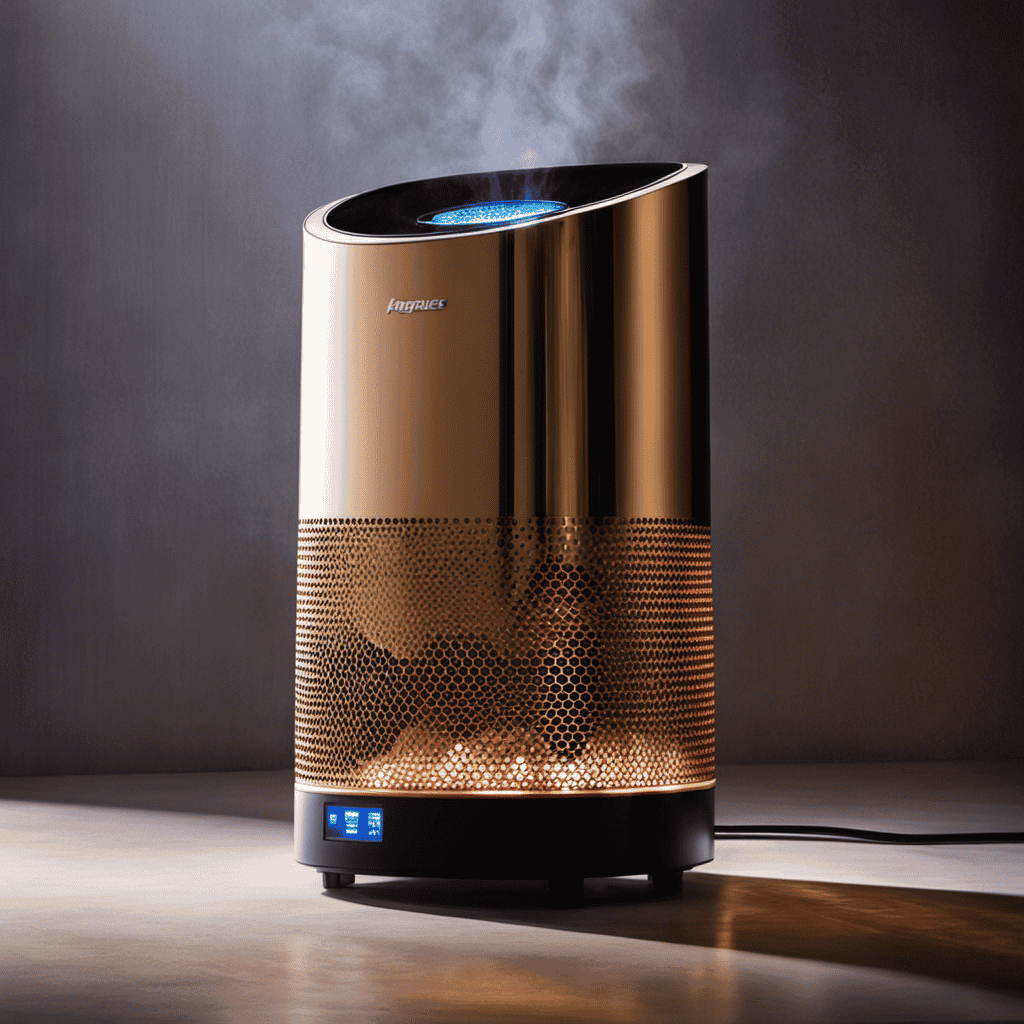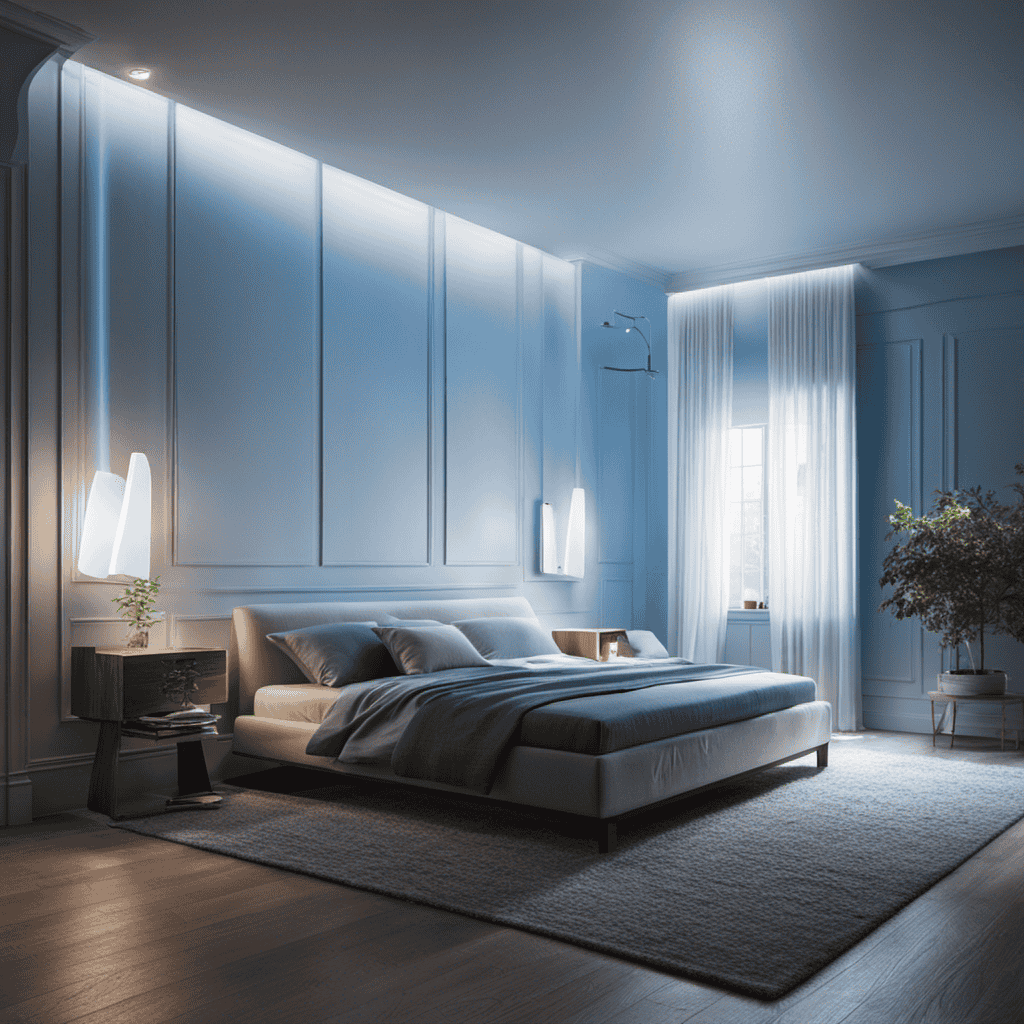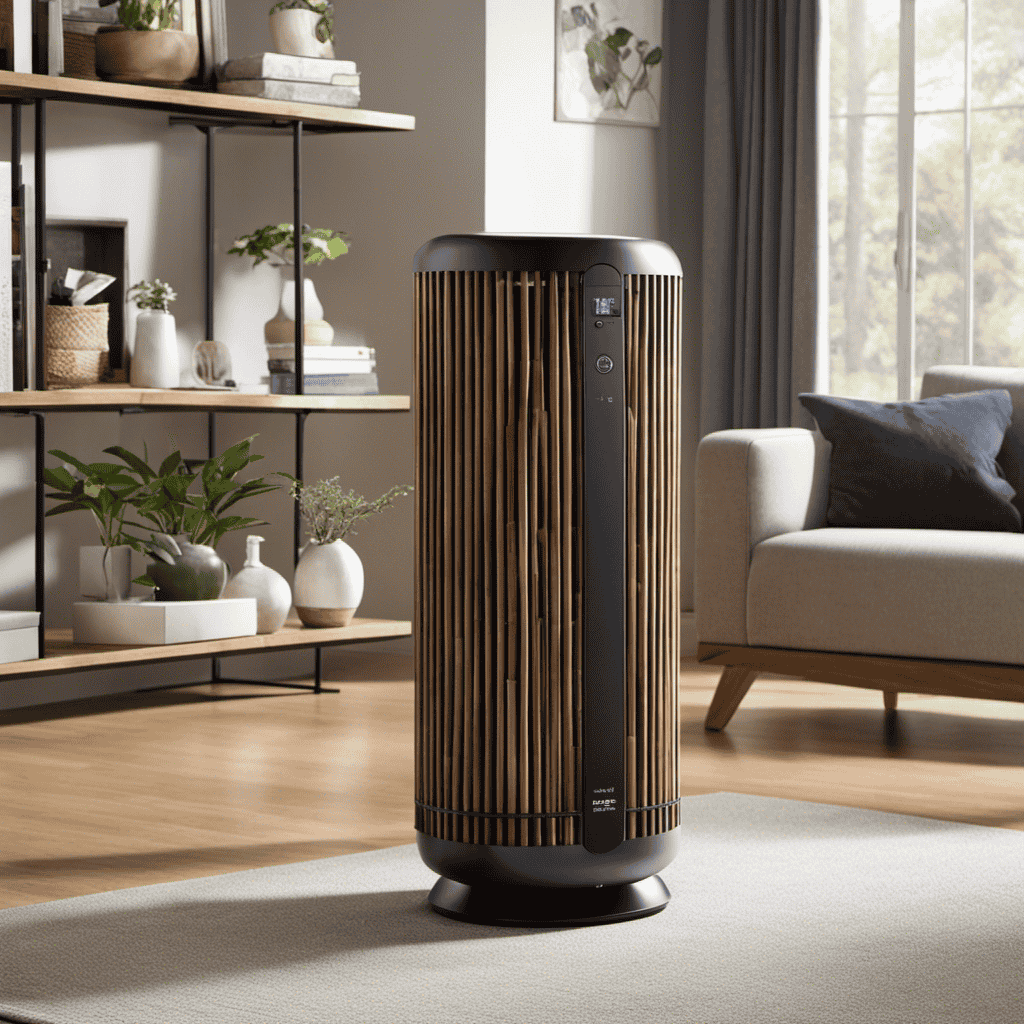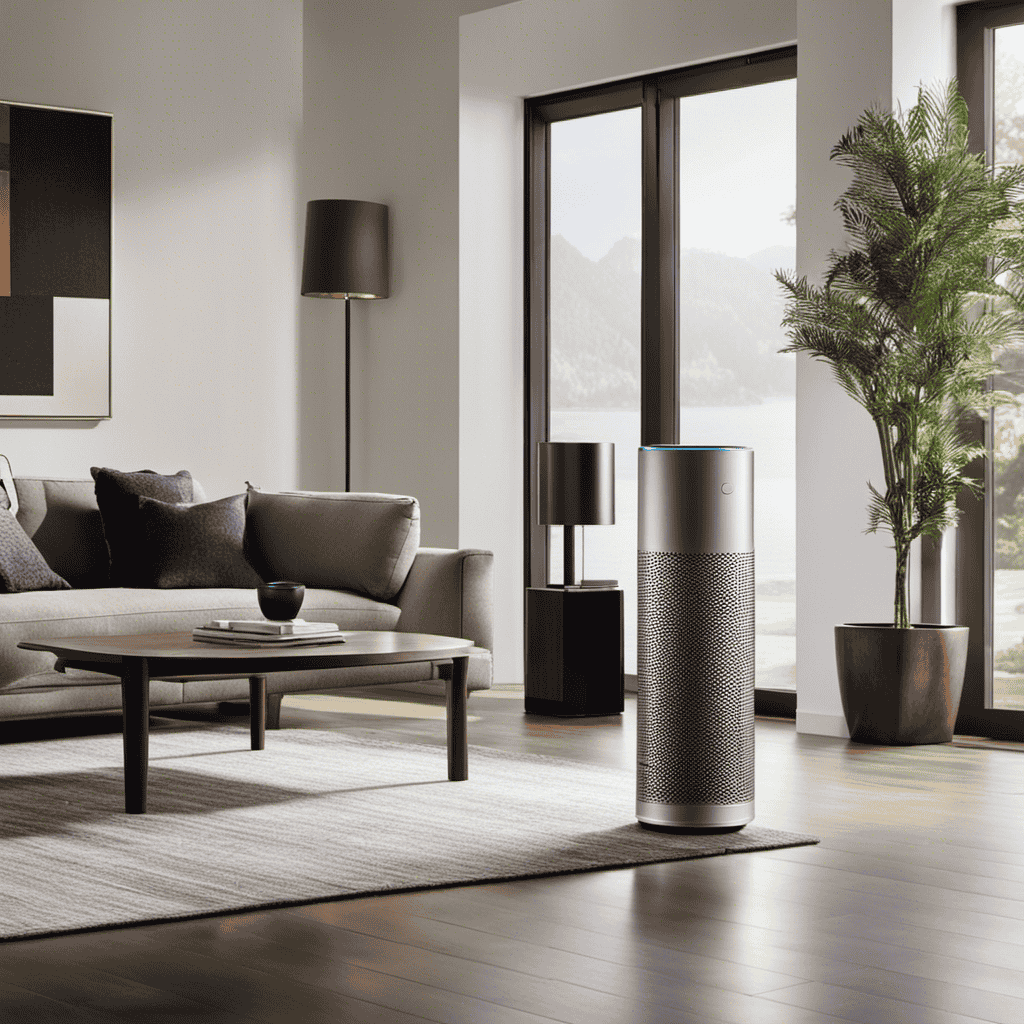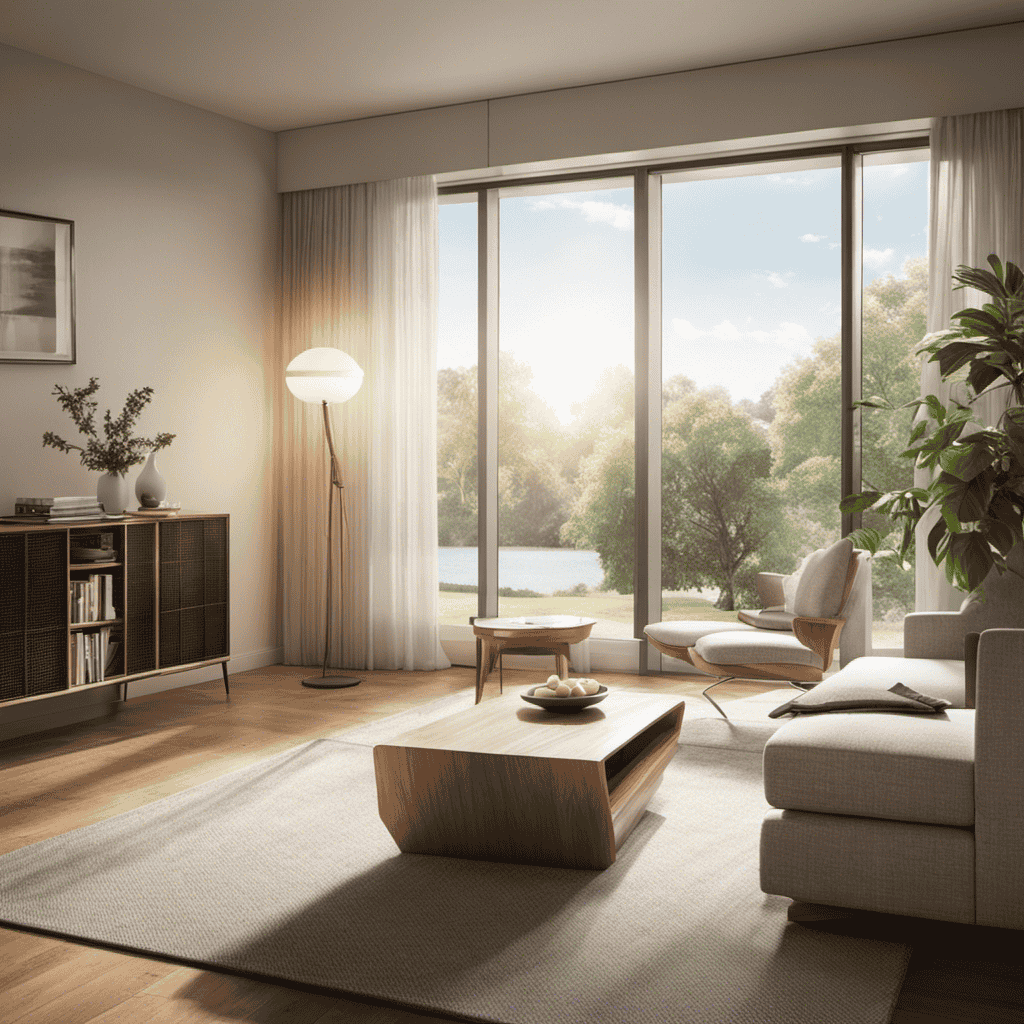So, you’ve acquired an electrostatic air purifier, right? But, how do you verify that it’s genuinely performing its intended function?
Well, fear not, my curious friend, because in this article, I will guide you through the process of determining whether your electrostatic air purifier is working effectively.
From checking for visible indicators of air purification to measuring air quality improvement, we’ll cover it all.
So sit back, relax, and let’s unravel the mysteries of your air purifier together.
Key Takeaways
- Electrostatic air purifiers use an electrical charge to trap and remove airborne particles.
- Visible indicators of air purification include an indicator light turning on and a decrease in airborne particles.
- Measuring air quality improvement can be done by monitoring pollutant levels before and after using the purifier.
- Regularly replacing filters and performing maintenance ensures optimal performance of the air purifier.
Understanding the Functionality of an Electrostatic Air Purifier
To understand if your electrostatic air purifier is working, you need to know how it functions.
Electrostatic air purifiers work by using an electrical charge to trap and remove airborne particles from the air. These purifiers have two main components: a set of metal plates and an ionizing section.
The metal plates are charged with a high voltage, creating an electrostatic field. As air passes through the purifier, the charged plates attract and capture particles such as dust, pollen, and pet dander.
The ionizing section releases negatively charged ions into the air, which attach to positively charged particles, causing them to become heavy and fall out of the air.
Regular air purifier maintenance, such as cleaning the metal plates, ensures optimal performance.
The benefits of using electrostatic air purifiers include improved indoor air quality, reduced allergens and odors, and increased respiratory health.
Checking for Visible Indicators of Air Purification
Check for any visible signs that indicate the air purifier is actively purifying the air. One way to check is to look for the presence of an indicator light on the purifier. Most air purifiers have a light that turns on when the device is in operation. If the light is on, it is a good indication that the purifier is working.
Additionally, observe the air around the purifier. If you notice a decrease in airborne particles such as dust, pet dander, or pollen, this suggests that the air purifier is effectively removing contaminants.
It is also important to listen for any unusual sounds coming from the purifier, as this could indicate a malfunction.
Lastly, to test the effectiveness of ionization, you can use an air quality monitor to measure the levels of pollutants before and after using the purifier.
Measuring Air Quality Improvement
The air purifier’s indicator light being on and a decrease in airborne particles suggest that the purifier is effectively improving air quality. To further measure air pollution, air quality sensors can be utilized. These sensors are capable of detecting various pollutants in the air such as dust, pollen, smoke, and volatile organic compounds (VOCs).
By monitoring the levels of these pollutants before and after using the air purifier, we can determine the extent to which it is improving air quality. Air quality sensors provide accurate and real-time data, allowing us to make informed decisions about the effectiveness of the purifier. This information is crucial in ensuring that the air we breathe is clean and healthy.
Transitioning into the next section, monitoring energy consumption and performance of the air purifier is equally important in maintaining its efficiency.
Monitoring Energy Consumption and Performance
When it comes to monitoring energy consumption and performance, there are a few key indicators to consider.
Energy usage indicators, such as kilowatt-hours (kWh) and power factor, can provide valuable insight into how efficiently energy is being used.
Additionally, performance tracking methods, such as benchmarking and energy audits, can help identify areas for improvement and optimize energy usage.
Energy Usage Indicators
You can easily identify if your electrostatic air purifier is working by looking for energy usage indicators. These indicators provide valuable information about the efficiency and performance of your air purifier.
Here are some energy saving tips and maintenance recommendations to keep in mind:
- Clean the filters regularly to ensure optimal air flow and energy efficiency.
- Check for any signs of damage or wear on the electrical components.
- Keep the air purifier in a well-ventilated area to prevent overheating and excessive energy consumption.
- Consider using a programmable timer to control the operating hours of your air purifier, reducing energy usage when it’s not needed.
By following these tips and recommendations, you can maximize the energy efficiency of your electrostatic air purifier and ensure it is working effectively.
Now let’s explore some performance tracking methods to further assess its functionality.
Performance Tracking Methods
To monitor the performance of your electrostatic air purifier, try using performance tracking methods. These methods can help you measure the effectiveness of your purifier and compare it to other models.
One way to track performance is by measuring the Clean Air Delivery Rate (CADR), which indicates the volume of clean air produced by the purifier.
Another method is to monitor the air quality using a particle counter, which measures the concentration of particles in the air.
Additionally, you can assess the noise level produced by the purifier using a decibel meter.
By using these performance tracking methods, you can determine if your electrostatic air purifier is working efficiently and compare its performance to other models in the market.
This will help you make informed decisions about air filter replacement and maintenance.
Assessing the Efficiency of Air Filter Replacement
When it comes to maintaining the efficiency of air filters, two key points to consider are timely filter replacements and filter performance indicators.
Timely filter replacements ensure that the filters are always clean and functioning optimally, preventing the build-up of pollutants in the air.
Filter performance indicators, on the other hand, provide a way to assess the effectiveness of the filters in trapping and removing harmful particles from the air.
Both aspects are crucial in maintaining a healthy and clean indoor environment.
Timely Filter Replacements
Regularly replacing the air purifier’s filters is essential to ensure its proper functioning. Proper filter maintenance is crucial for maintaining air purification effectiveness. Here are some key points to consider:
- Filters become dirty and clogged over time, reducing their ability to capture airborne particles effectively.
- A dirty filter can cause the air purifier to work harder, leading to increased energy consumption and decreased performance.
Regularly replacing the filters helps to maintain optimal air quality by ensuring that the purifier can effectively remove pollutants from the air. Different types of filters have different lifespans, so it’s important to follow the manufacturer’s recommendations for replacement intervals.
Filter Performance Indicators?
The filter performance indicator shows you how effectively the air purifier is capturing airborne particles. It is an essential tool for filter maintenance and allows you to monitor the efficiency of your air purifier over time. By regularly checking the indicator, you can ensure that your purifier is working optimally and providing you with clean and healthy air.
In addition to the indicator, air purifier technology has advanced significantly in recent years. Newer models are equipped with more efficient filters, such as HEPA filters, which can capture even the smallest particles. These filters are designed to trap dust, pollen, pet dander, and other allergens, providing relief for allergy sufferers. With regular filter replacements and proper maintenance, your air purifier can continue to effectively clean the air in your home, ensuring a healthier living environment for you and your family.
| Air Purifier Technology | Filter Maintenance | Filter Performance Indicator |
|---|---|---|
| HEPA Filters | Regular Replacements | Monitors Efficiency |
| Advanced Filtration | Proper Cleaning | Ensures Clean Air |
| Allergen Removal | Maintenance Schedule | Filters Airborne Particles |
Troubleshooting Common Issues With Electrostatic Air Purifiers
If you’re having trouble with your electrostatic air purifier, try checking for any loose connections. This is a common issue that can affect the performance of the purifier.
Here are some troubleshooting steps to help you identify and fix common problems:
-
Check for loose connections: Make sure all the cables and wires are securely connected to the purifier and the power source.
-
Clean the plates: Over time, the plates in the purifier can become dirty and affect its effectiveness. Remove the plates and clean them according to the manufacturer’s instructions.
-
Replace the filters: If the purifier has filters, check if they are dirty or clogged. Replace them if necessary.
-
Reset the unit: Sometimes, simply resetting the unit can resolve minor issues. Refer to the user manual for instructions on how to reset your specific model.
Regular maintenance and troubleshooting can help ensure that your electrostatic air purifier continues to work effectively.
Conclusion
In conclusion, after delving into the world of electrostatic air purifiers, I have come to realize that determining their effectiveness is like peering through a looking glass.
It requires a keen eye to spot visible signs of purification, a scientific approach to measure air quality improvement, and a vigilant monitoring of energy consumption.
Additionally, assessing the efficiency of air filter replacement and troubleshooting any issues that may arise are crucial.
So, dear readers, embark on this journey armed with knowledge, and let your air be cleansed with the power of science.
